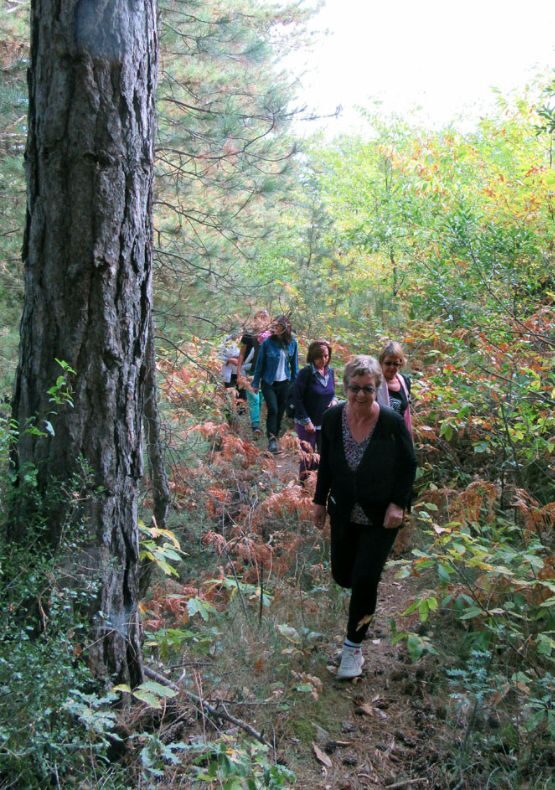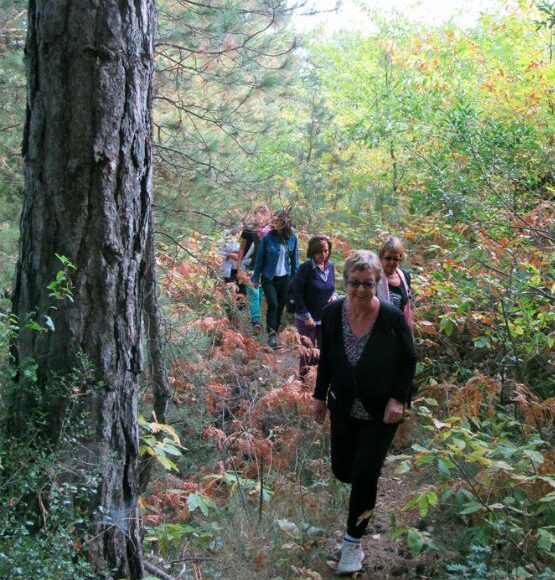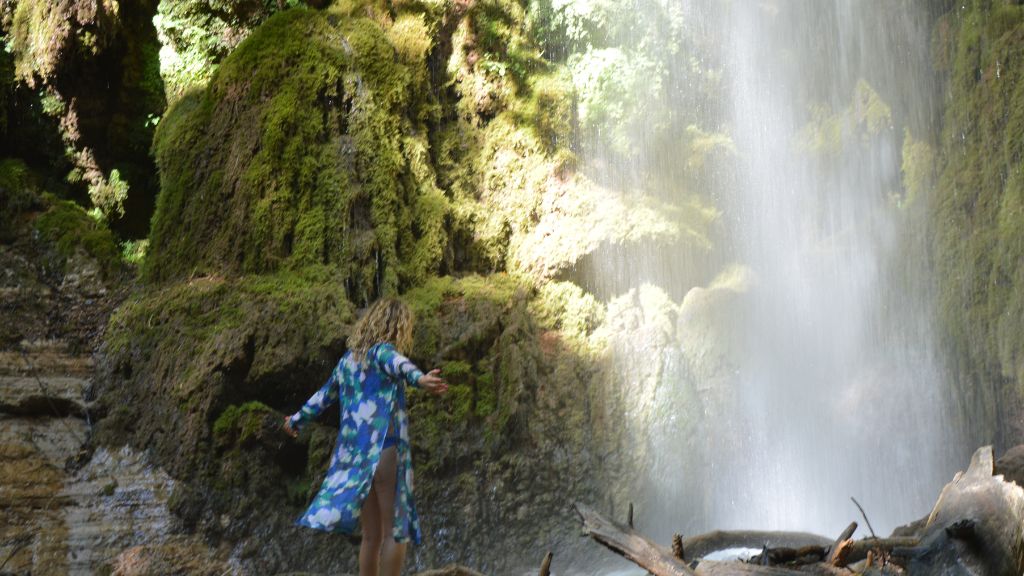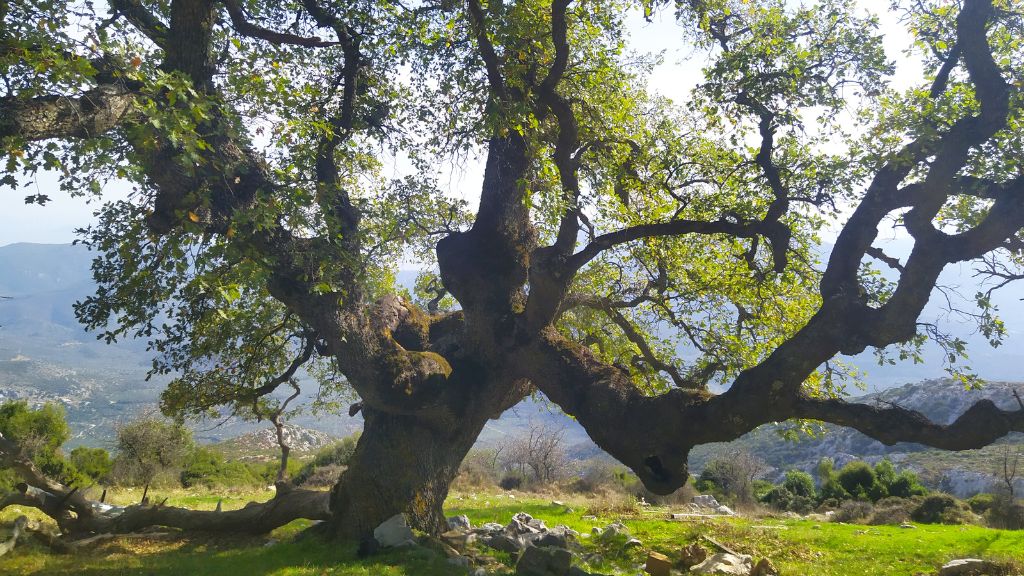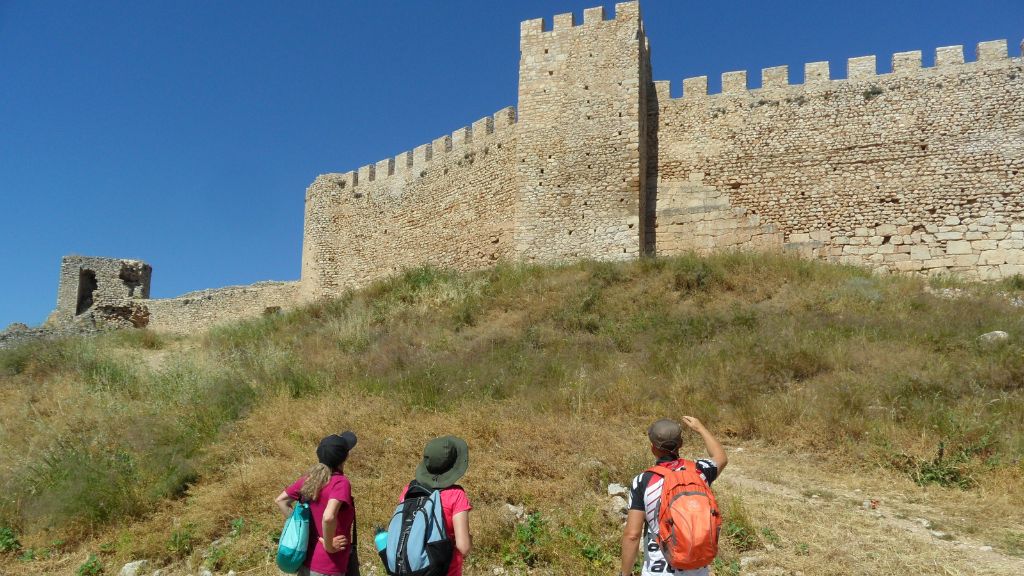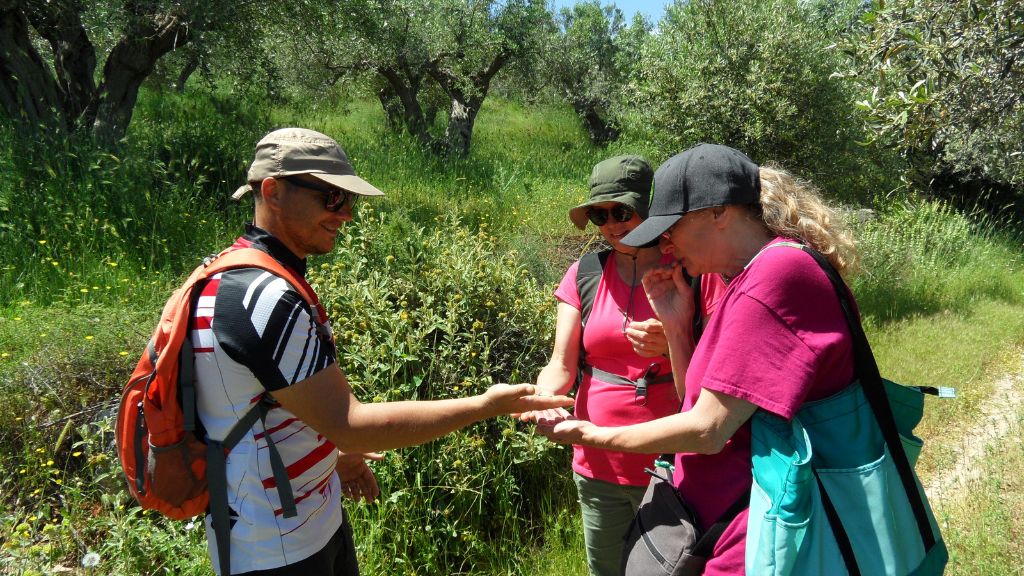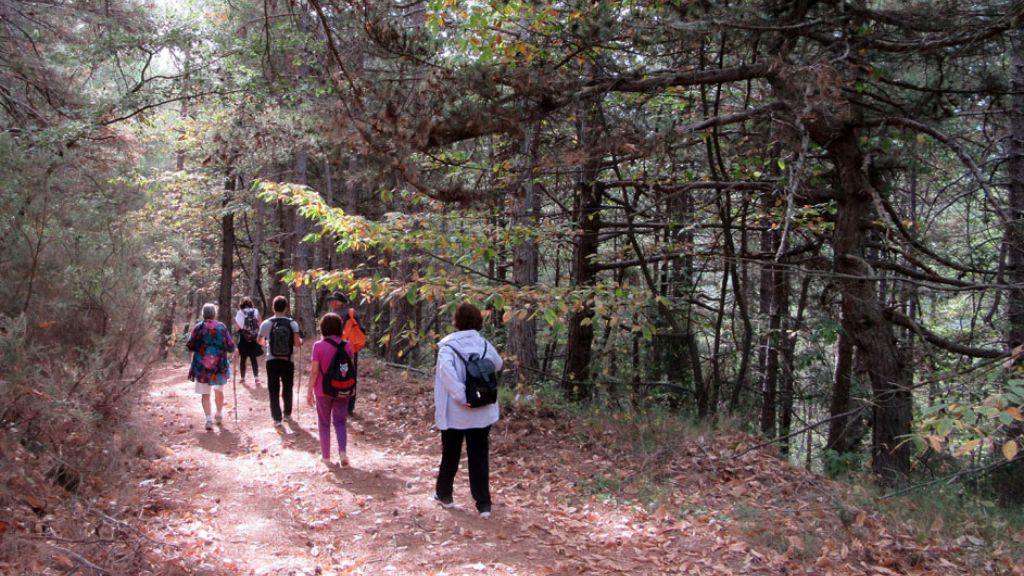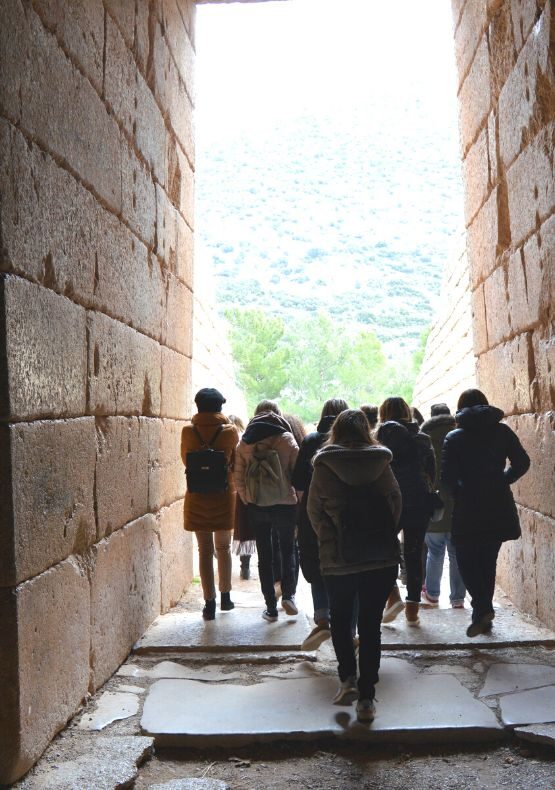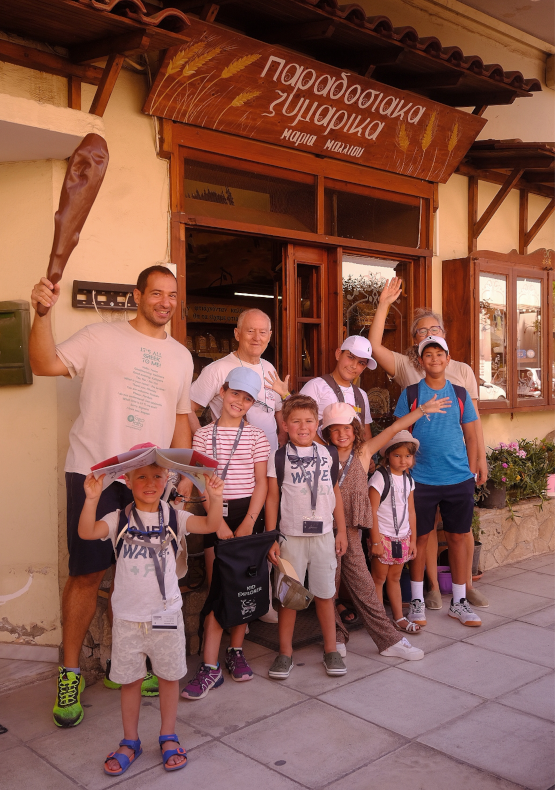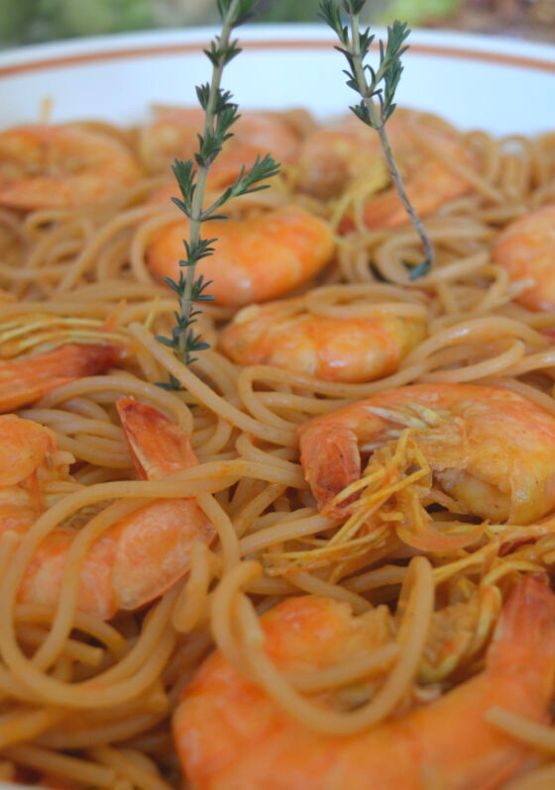A wonderful adventure in the Greek nature
Hiking in Hermione
Hiking in Hermione
3 unique hiking tours in the heart of Argolis and vast natural beauty surroundings!
Itinerary
Hiking in Hermione
Hiking in Hermione: Persephone
The village of Iliokastro is located north of Hermione on the plateau of “Eileoe”, south of the Aderes Mt Range, named after the Eileum vines that produced sweet wine in the ancient times. , Iliokastro is famous for its wine until today. Pausanias, the Greek historian and traveller, wrote in the 2nd century AD in his writings about the small steep hill, which was for the acropolis, and were the sanctuaries of Demeter and her daughter Persephone were. Today the ruins of the ancient city Eileoe show ancient walls, foundations and traces of Mycenaean tombs.
The “Persephone hiking path” begins at the location of Papoulia and ends after 9 km at the village of Iliokastro (about 2 hours and 15 minutes hiking. Plus a picnic at Papoulia, or lunch at the village of Iliokastro or Ermioni).
The main passage is through the gorge of Katafiki, with vertical walls of 200m. The gorge is famous for its outstanding natural beauty. This is a rare route for the area and the passage is through dense vegetation, with plane trees, pine trees and oleander bushes. Meanwhile, an important point at our route is the old water mill, a proof of the abundance of water that once was presence here. Finally, the last kilometers to the village are on a rural road.
Hiking in Hermione: Hercules
Hiking in Hermione
Fourni is a village located north of Kranidi. It has a traditional island style with narrow cobbled streets, gardens full of flowers and colorful houses. It has the architecture and style of the seaside villages of Hermione and the islands of the Saronic Gulf. There are remains of all the historical eras in this village, as well in the prehistoric settlements near it. The name Fourni refers to the second daughter of a mythical King, Fourneas, according to the locals. He reigned in the coastal area, where his palace was, built with huge limestone blocks.
The “Hercules hiking path” is a circular route of 11 km. (approximately 2,5 hours hiking. Plus a picnic at Papoulia, or lunch in the village of Fourni or Ermioni). This path is available by mountain bike as well. This hiking path was in the ancient times one of the roads that connected Ermioni with the area of Homeric Masita, today’s Koilada.
The route is through the gorge of Katafiki, a small gorge with a large history and mythology. The gorge is between the two mountains Mavrobouni (Black Mt.) and Asprovouni (White Mt.). The name, Katafiki, is from the word “katafygio”, which means shelter. Through history the gorge has given shelter to the local inhabitants of the area. Therefore as the protection from the invasions of pirates, and generally to all the hostile raids over time.
Inside the gorge we will find the church of Saint Nicolas. With its name (St. Nicolas is the protector of the sea and sailors) it is a witness of the abundance of water in those times. Also on the surrounding rocks one can still see the painted crosses, from the believers. Additionally these signs help to purify the evil demons, who they believe live in the caves, so they would have a safe passage through the gorge. Today the church is a Byzantine monument. From the same time era is also the historical bridge that we will see on this hiking path through the gorge.
Hiking in Hermione
Hiking in Hermione
For the ancient inhabitants of Hermione this was a holy place. They believed that here one of the gates to the Underworld was located, with destination to the kingdom of Hades. One can distinguish it easily at the south of the gorge, at the entrance of the Fourkas cave (how they call it nowadays), a cave connected with important myths of Greek mythology. Moreover, the 200 meters sharp cut rock, Hercules passed to the Underworld to fulfill his twelfth labor, the last and most difficult one: to catch and carry the terrifying Cerberus to the king of Tyrins, Eurystheus. A dog with three heads and a tail that ends in a dragon’s head.
The continuation of the path crosses a picturesque pine forest and ends up at the location of Papoulia, a perfect spot for a rest and to enjoy the running water. The hiking path continues to the village of Fourni at a rural dirt road. Fourni is one of the most beautiful and picturesque villages of the Hermione’s region, with about 370 inhabitants. Later in 1991, the associations and inhabitants of the surrounding area, especially from the village of Fourni, fought and prevented the construction of a public road in the area of the gorge.
From Fourni the path continues to the location Portes (doors), the highest point of the route, with a beautiful view of the whole plain of Katafiki and Ermioni. Going down, the path passes through old olive groves and ends at the entrance of Katafiki gorge.
(Alternatively, one can start this hiking path from the village of Fourni, or from the Papoulia location.)
Thermisia is a coastal village located 10km northeast of Hermione. Its name derives from the ancient temple of Demeter of Thermasia which was built by the sea, at the site of the present lagoon. This name survived until today, altered to Thermasia which subsequently became Thermisia. At the entrance of the village an imposing limestone rock dominates, at the altitude of 292 meters. This is were the Castle of Thermisia is built, assumingly by the Venetians in the 12th century. During the Middle Ages great salt mine activity was developed around the lagoon. Today it is an important habitat and passage of rare migrant birds. The hike will last approx. 3 hours. With a picnic at the Castle.
Image Gallery
Important Information
–Local profeccional guide
–Refreshing delicious snacks
** Prices may be changed depends season & number of persons
– Transportation
– Travel and medical insurance.
– Gratuities

